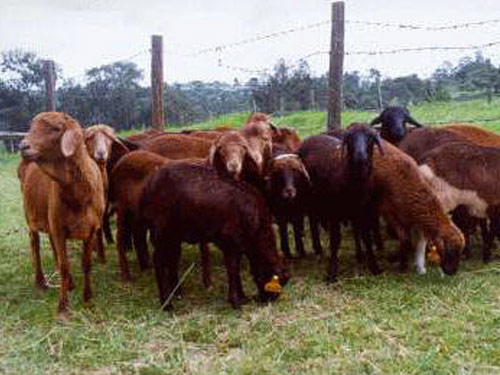Support Sudanese Farmers مبادرة شراءالقمح من المزارعين
Posted 3 years ago
- 2153

تصور لتنفيذ مشروع تنموي
تسمين ثروة حيوانية (ضأن)
تعتبر الثروة الحيوانية واحدة من ركائز الإنتاج الاقتصادي في السودان، حيث يمتهن أكثر من 30% من سكان السودان الرعي وتربية الحيوان، وحيث أن الثروة الحيوانية أقل مخاطرة فأصبحت جاذبة ومصدر دخل للأسر الصغيرة
في هذا المشروع نسعى لتمليك المستهدفين عدد (300) رأس ضأن بعمر 4 إلى 5 شهور
الأهداف العامة
إيجاد مصدر دخل ثابت للأسر الضعيفة والمحتاجة
تخفيف حدة الفقر
خفض أسعار الثروة الحيوانية ومنتجاتها. (لحوم/ جلود/ سماد)
المدخلات
عدد (300) رأس ضان 4 – 5 شهور
موقع للحظيرة من 2 – 3 فدان (8400 – 10600) متر مربع
سياج لمحيط الحظير بالحديد والسلك الشائك ومداخل للحظيرة
غرفتين بالمواد الثابتة
بئر مياه صالحة للشرب مع كامل ملحقاتها (وابور ديزل ومواسير توصيل وغيرها)
زراعة مساحة واسعة بالأعلاف والبرسيم
تقاوى أعلاف ومحاصيل للتغذية
أحواض لشرب الضأن
رعاية بيطرية واحتياجاتها
وسيلة نقل صغيرة (تكتك)
وقود
الإستهداف
يستهدف المشروع تشغيل عدد (30) من الشباب والشابات يقومون على المتابعة الفنية والإدارية والتسويق
مراعاة النوع الاجتماعي
يستهدف المشروع المناطق التي تمتهن الرعي
يستهدف المشروع تسويق المنتجات بالأسواق المحلية ويمكن لتصدير
يتيج المشروع التدريب ورفع القدرات والتوسع لاستيعاب أنماط أخرى للإنتاج (دواجن مثلاً) في نفس المكان مع مراعاة النواحي الصحية والوقائية
الدراسات
الدراسة الاقتصادية للمشروع تقوم على تربية وتسمين الضأن بسعر الشراء في حدود 25000 إلى 35000 من أنواع جيدة للضأن
ضمان توفير مياه الشرب للضأن من داخل المزرعة وكذلك الغذاء بزراعة الأعلاف والمحاصيل الحقلية على مجار العام
تتم في البداية تسوير الحظيرة وتنفيذ البئر وزراعة الأعلاف على مراحل ومن ثم شراء الضأن ليجد المحاصيل والمياه موجودة وتكون زراعة المحاصيل والأعلاف بشكل دوري حتى تتوفر على طول العام
تسويق الضأن على مراحل وتتم عملية الإبدال والإحلال من قيمة البيع
الريع والأرباح
بعد حساب تكاليف الإنتاج والمستهلكات والمدخلات يتم توزيع الأرباح على المشغلين
يتم تجنيب جزء من الأرباح في شكل صندوق للإدخار والتسليف تستفيد منه المشغلين
Livestock is one of the pillars of economic production in Sudan, where more than 30% of the population of Sudan is engaged in herding and animal husbandry. Investing in livestock has become less risky in recent years and is an attractive source of income for small families. In this project, we seek to own 300 sheep, aged 4 to 5 months.
Project Objectives:
Requirements:
Project Goals:
Financial Analysis:
Revenue and Profits:
National Priorities
2- Stabilize the Economy, 6- Women Representation, 8- Youth Employment, 9- Social Development
SDG Goals
1- No Poverty, 2- Zero Hunger, 8- Decent Work and Economic Growth, 11- Sustainable Cities and Communities, 12- Responsible Consumption and Production
Project Type
Development, Investment
Status
New
Entity Type
Cooperative
Stage
Analysis
Timeline
2022